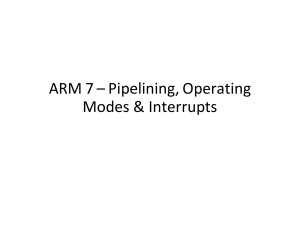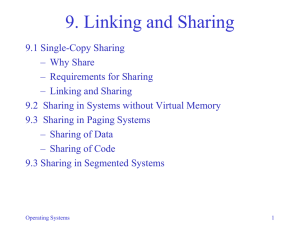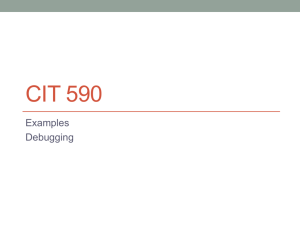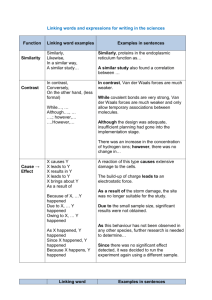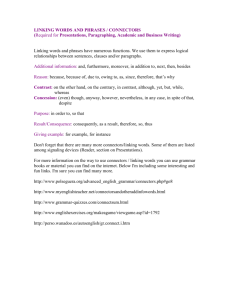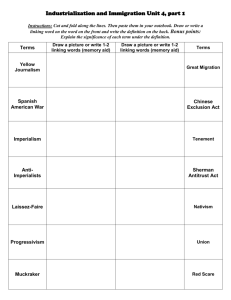CSS371 Computer Organization
advertisement
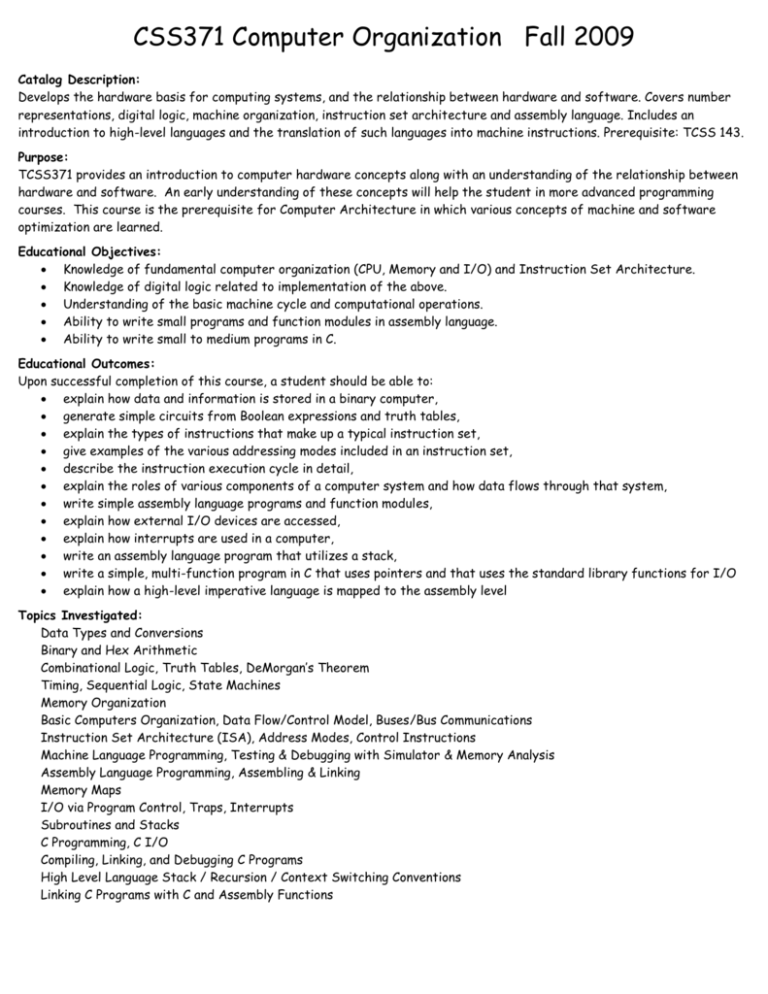
CSS371 Computer Organization Fall 2009 Catalog Description: Develops the hardware basis for computing systems, and the relationship between hardware and software. Covers number representations, digital logic, machine organization, instruction set architecture and assembly language. Includes an introduction to high-level languages and the translation of such languages into machine instructions. Prerequisite: TCSS 143. Purpose: TCSS371 provides an introduction to computer hardware concepts along with an understanding of the relationship between hardware and software. An early understanding of these concepts will help the student in more advanced programming courses. This course is the prerequisite for Computer Architecture in which various concepts of machine and software optimization are learned. Educational Objectives: Knowledge of fundamental computer organization (CPU, Memory and I/O) and Instruction Set Architecture. Knowledge of digital logic related to implementation of the above. Understanding of the basic machine cycle and computational operations. Ability to write small programs and function modules in assembly language. Ability to write small to medium programs in C. Educational Outcomes: Upon successful completion of this course, a student should be able to: explain how data and information is stored in a binary computer, generate simple circuits from Boolean expressions and truth tables, explain the types of instructions that make up a typical instruction set, give examples of the various addressing modes included in an instruction set, describe the instruction execution cycle in detail, explain the roles of various components of a computer system and how data flows through that system, write simple assembly language programs and function modules, explain how external I/O devices are accessed, explain how interrupts are used in a computer, write an assembly language program that utilizes a stack, write a simple, multi-function program in C that uses pointers and that uses the standard library functions for I/O explain how a high-level imperative language is mapped to the assembly level Topics Investigated: Data Types and Conversions Binary and Hex Arithmetic Combinational Logic, Truth Tables, DeMorgan’s Theorem Timing, Sequential Logic, State Machines Memory Organization Basic Computers Organization, Data Flow/Control Model, Buses/Bus Communications Instruction Set Architecture (ISA), Address Modes, Control Instructions Machine Language Programming, Testing & Debugging with Simulator & Memory Analysis Assembly Language Programming, Assembling & Linking Memory Maps I/O via Program Control, Traps, Interrupts Subroutines and Stacks C Programming, C I/O Compiling, Linking, and Debugging C Programs High Level Language Stack / Recursion / Context Switching Conventions Linking C Programs with C and Assembly Functions
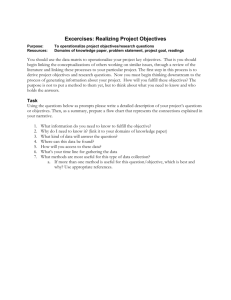

![COURSE NUMBER/TITLE: CS-145 [354-145] COMPUTER SCIENCE II CREDITS:](http://s2.studylib.net/store/data/010725452_1-ae5f1fba080ab698a7d42242aabf0333-300x300.png)

